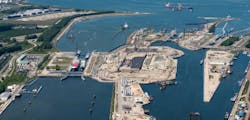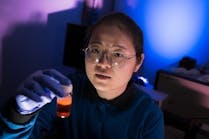East Los Angeles Community Housing Group Moving to All-Electric Across Properties
The East LA Community Corporation (ELACC) plans to enhance housing sustainability and work to try and improve public health in the Boyle Heights community of Los Angeles.
The organization is transitioning to an all-electric energy system across its housing portfolio.
Decarbonization in Housing: Read more @EnergyTech
Th transition not only aims to reduce its carbon footprint but also addresses critical public health issues in Boyle Heights.
ELACC is implementing a comprehensive decarbonization strategy across its portfolio of 24 properties encompassing 482 housing units and 2,500 tenants. The first two projects undergoing the transformation are Lorena Terrace Apartments and Vallejo Apartments to positively impact 300 tenants.
“At ELACC, we believe that affordable housing must also be sustainable housing. By integrating sustainability into the core of our development strategy, we are not just preserving homes for low-income families—we are creating healthier, more equitable communities,” says Monica Mejia, President and CEO of ELACC.
The properties will receive roughly $2.5 million initially for project improvements, and the entire portfolio will receive $500,000 for solar improvements.
Key upgrades to be included at the first two properties are:
- Installing Energy Star-rated heat pump HVAC systems, inclusive of units lacking air conditioning
- Implementing high-efficiency heat pump water heaters, aerators, and shower heads
- Replacing gas cooktops and ovens with induction cooktops and electric resistance ovens
- Installing new energy efficient windows designed to reduce energy consumption
- Installing solar panels and batteries
- Enhancing electrical service and wiring to support new appliances
ELACC expects tenants to save approximately $12,000 annually in utility costs and help improve health outcomes by eliminating indoor air pollution. The efficiency improvements will reduce energy and water consumption, which will not only enhance drought resilience but also support Los Angeles' goal of 100 percent clean energy by 2035.
According to recent studies, 80 percent of tenants in ELACC’s portfolio suffer from chronic illnesses, with air pollution in Boyle Heights being particularly severe. The studies have demonstrated the harmful impact of gas stoves on indoor air quality, contributing to higher asthma rates.
A recent study in The International Journal of Environmental Research and Public Health suggested eliminating gas stoves will help prevent 20 percent of asthma cases in California.
The efforts are part of the Retrofit.LA cohort, a Los Angeles Department of Water and Power (LADWP)-funded initiative designed to develop strategies for achieving 100% clean energy for all Angelenos by 2035. Sustento Group is the overall program manager for Retrofit.LA, guiding and supporting ELACC and other cohort members through the entire process of portfolio analysis, pilot project selection, scoping, and financing.
ELACC has assembled a $3 million parent-level revolving credit facility to start executing improvements.
The approach will help gain access to the $27 billion available from the EPA’s Greenhouse Gas Reduction Fund (GGRF) and expand funding by attracting private capital.
Turning Buildings into Revenue Assets with Grid-Interactivity
New Content in Microgrid Knowledge
In partnership with the Housing Partnership Network (HPN) and Inclusive Prosperity Capital (IPC), Sustento and IPC linked the Retrofit.LA cohort with a group of Community Development Financial Institutions (CDFI’s) from HPN’s Housing Sustainability Collaborative. The collaboration resulted in a new green financing venture, SURE – Sustainable Underwriting for Resilience and Efficiency.
This process developed a revolving credit facility, secured by incentives, allowing ELACC to fund decarbonization retrofits across its portfolio without disrupting existing financing agreements. The financing structure was created with the help of two national nonprofit CDFI’s, HPN’s Housing Partnership Fund led the transaction, while Raza Development Fund was a participating lender.
ELACC is leveraging incentives from four programs as the primary source of loan repayment: LADWP’s Comprehensive Affordable Multifamily Retrofits (CAMR) Program, California’s Low Income Weatherization Program (LIWP), TECH Clean California, and the South Coast AQMD’s Multifamily Affordable Housing Electrification Program (MAHEP).
The projects are also supported by The Ahmanson Foundation and the Wells Fargo Foundation.
ELACC is collaborating with UC Berkeley to survey tenants and assess the health and financial impacts of withdrawing from carbon-emitting technologies. The survey will provide valuable insights for stakeholders and policymakers.





